Boeing-Stearman PT-17 Kaydet
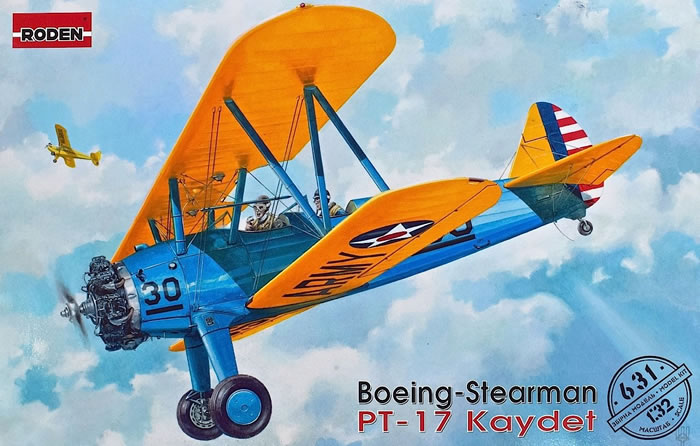
Roden, 1/32 scale
S
u m m a r y : |
Description and Item No.: |
Roden Kit No. RD631 - Boeing-Stearman PT-17 Kaydet |
Contents and Media: |
120 parts in grey styrene, 5 in clear, and one decal sheet with markings for two airframes. |
Price: |
£59.99 EU Price (£49.99 Export price) plus shipping from Hannants
USD$51.99 plus Shipping from Kitlinx
and hobby shops worldwide and online. |
Scale: |
1/32 |
Review Type: |
First Look |
Advantages: |
Straightforward engineering, low parts count, and beautifully rendered fabric surface details. |
Disadvantages: |
None noted. |
Recommendation: |
Engineering is simple and straightforward. With the relatively low parts count assembly should be a quick and easy. Sufficient cockpit and engine details are provided in the box but this kit really lends itself to some awesome super detailing. |
Reviewed by John Miller

Airfix's 1/72 scale Sea King is available online from Squadron.com
The Stearman (Boeing) Model 75 is a biplane formerly used as a military trainer aircraft, of which at least 10,626 were built in the United States during the 1930s and 1940s. Stearman Aircraft became a subsidiary of Boeing in 1934. Widely known as the Stearman, Boeing Stearman or Kaydet, it served as a primary trainer for the United States Army Air Forces, the United States Navy (as the NS and N2S), and with the Royal Canadian Air Force as the Kaydet throughout World War II. After the conflict was over, thousands of surplus aircraft were sold on the civilian market. In the immediate postwar years they became popular as crop dusters, sports planes, and for aerobatic and wing walking use in air shows.
(Edited from Wikipedia)
Roden's 1/32 scale Boeing / Stearman PT-17 Kaydet comprises approximately 120 parts in grey styrene, 5 in clear, and one decal sheet with markings for two airframes.
The first thing that strikes you upon opening the box is the wingspan. This is going to be a large kit when assembled. The fabric-covered surface details, especially the rib stitching, are very well done and will look very convincing under paint and a wash. There’s a bit of flash on some of the finer parts but nothing a new X-Acto blade and a little patience can’t take care off.
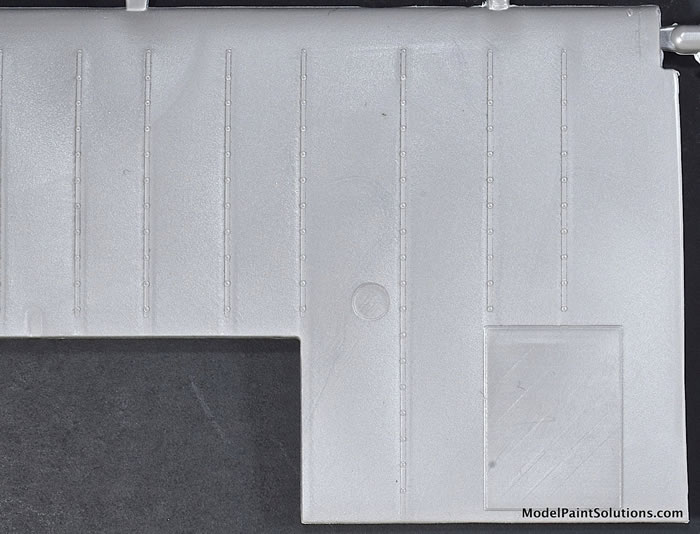
Assembly begins with the full-span upper and lower wing halves. Separate clear navigation lights are provided for each wing tip: nice. The ailerons on each lower wing have three separate hinge pieces that hold the assembled aileron to the wing. These will look very realistic when assembled.
The nicely molded Continental R-670 7-cylinder radial engine is next up and here the super detailers will have a blast adding to what is already a very detailed engine right out of the box.
Next in sequence are the cockpits complete with the exposed tube frame, which is composed of three main parts. Details such as dual throttle and mixture controls, footboards, control sticks, and various levers and hand cranks are nicely molded, as are the 5-piece seats.
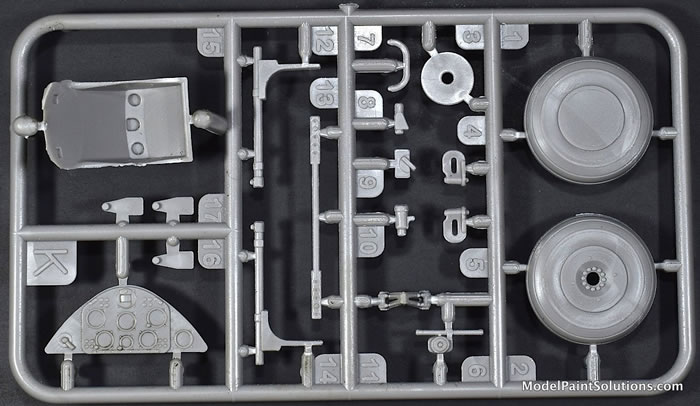
The instrument panels are crisply molded with the individual instrument faces provided as decals. As with the engine, super detailers will have a ball sprucing up the cockpits and their work will be easily seen in this scale.
The horizontal stabilizers, elevators, and rudder are all single pieces greatly simplifying assembly. Both the elevators and rudder are poseable.
The wing struts feature a lot of molded-in details such as the Pitot tube assembly on the port N-strut and fuel lines and both cabane struts. Small details like these will make for a very convincing build when complete.
The windscreens are crystal clear with scale-appropriate framing.
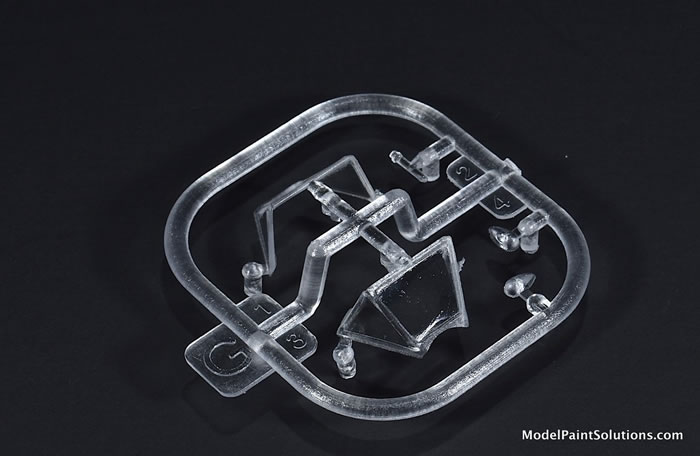
Navigation lights are also included on the clesr sprue.
Color and Markings
The decals, by Roden, have good registration and color density.
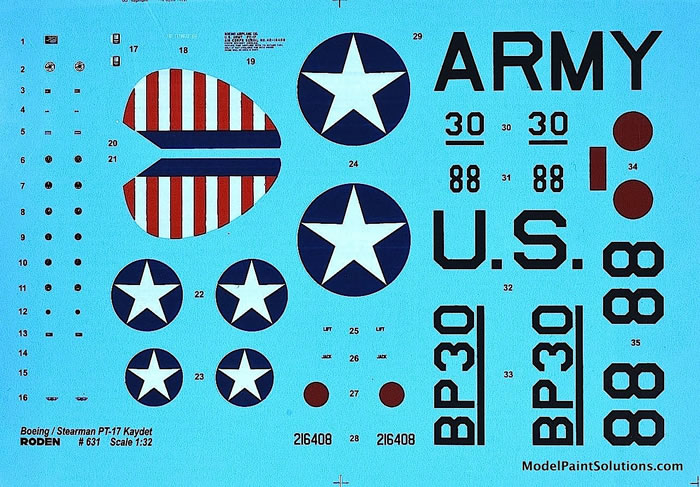
Airframe stencil data and markings for two airframes are provided as follows:
-
Boeing-Stearman PT-17 Kaydet (BP-30), 4 British Flight Training School, Mesa, Arizona, USA, early 1940’s. (Blue Fuselage with Yellow Wings).
-
Boeing-Stearman PT-17 Kaydet (s/n 42-16048), “88”, U.S. Army Flight Training Base, Mather Field, Sacramento, California, October 1942. (Overall Silver Dope)
This is going to be a beautiful kit when built. The engineering is simple and straightforward and with the relatively low parts count assembly should be a quick and easy. Sufficient cockpit and engine details are provided in the box but this kit really lends itself to some awesome super detailing. Highly Recommended!
For more on this review visit Modelpaintsolutions.com
Review kit provided by my retirement fund - again.
Review Text and Images Copyright © 2020 by John Miller
Page Created 14 May, 2020
Last updated
19 May, 2020
Back to HyperScale Main Page
Back to Reviews Page

|
Home
| What's New |
Features |
Gallery |
Reviews |
Reference |
Forum |
Search